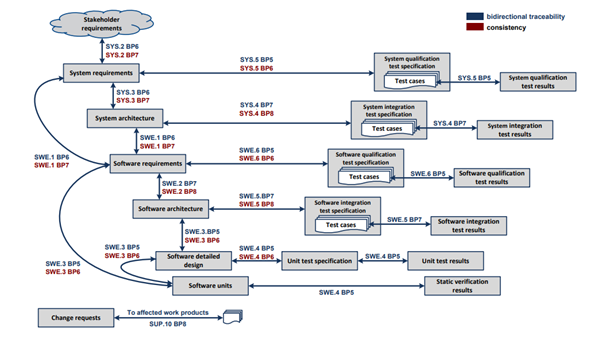Why Is Multi Cloud the Next Big Thing for Companies?
Category : Digital Commerce & Experience Blog
The past few years have witnessed an explosion in data followed by a boom in information. So, it became the need of the hour that companies and workplaces handle the data efficiently. The concept of cloud storage had led to data inputs from more sources and other benefits in the past. With so much data to store and work with, it becomes important to store and handle data that come from different sources efficiently. Multi cloud was proposed with a similar utility in mind. Though it wasn’t put to effective use immediately, more companies have started to adopt multi cloud as it has been quite promising in handling multiple workloads.
Multi Cloud and Hybrid Cloud – A Strategic Approach to Data Handling
Since multi cloud targets can refer to a great range of cases, the term multi cloud can’t be put under a single definition. Sometimes it refers to leveraging multiple cloud technologies simultaneously. It might also refer to using multiple public clouds at the same time for different workloads. It can also stand for the usage of multiple clouds (that don’t categorize under the same public cloud) along with some conventional non-cloud technology (this is sometimes referred to as hybrid cloud).
With new cloud management tools like Google Anthos, multi cloud can be considered the best strategic approach to cloud computing for companies.
To adopt and get acquainted with this strategy, companies are looking into the advantages and disadvantages. There are numerous unique features and problems which can be solved by the adoption of this method, and it is only going to get more popular in the long run.

Entering the Era of Multi Cloud
Software products are subject to change because of technology friction and competition. Consequently, companies are required to release updates frequently. This frequency can even refer to multiple updates in a day. This led to the employment of the concepts of CI (Continuous Integration) and CD (Continuous Deployment), to meet the evolving software needs. Other factors like containerization are pushing companies to work towards these updates further, resulting in more information to manage and work with. This can be considered another major reason for the use of multiple public clouds.
Such situations also bring in the essentiality of using hybrid clouds, combining different cloud services with traditional computing promoting security by segregating the work process into different segments. All these factors put together, call for the importance of using multiple clouds or multi cloud technology.
Why Is the Trend Changing?
With the multi cloud technology reaching maturity many large companies have already started moving towards multi cloud management. Multi cloud is slowly transitioning from being just an option, to becoming a requirement and will quickly become a necessity in the market in the days to come.
There are several factors that are driving this change:
- Saving cost and avoiding dependency: Nowadays a lot of companies solely use only one cloud solution for their purpose amongst which Amazon Web Services (AWS) is very popular due to its flexibility and myriads of options for different uses. However, to save and distribute expenditure and not be too reliant on a single resource resulting in autonomy, people are looking forward to adopting multi cloud management systems
- Right tool for the right job: It is evident that different cloud platforms suit the purposes of different professionals. Amazon’s AWS, Google’s Cloud Platform, Microsoft’s Azure, etc all appeal to different types of workflows and skills, all of which may be required at a company. It is therefore much more efficient to be able to employ the correct resource at the correct site at the company level
- Resilience and data regulations: Multi cloud management is also a good practice to ensure resilience so that all data remains safe in case of some anomalies or failures. It also comes into play when a company needs to employ different options in different regions due to legal reasons or due to availability. For example, many countries restrict data to be stored within their geography itself which may cause issues in some situations.
These factors can also be considered as the advantages of embracing multi cloud.
Plethora of Benefits
Apart from the advantages listed above, multi cloud comes with a set of benefits:
- High security
- Reduced latency
- Autonomy
Organizations with multi cloud infrastructure have the power to maintain high security coupled with cost savings.
Data stored in clouds takes time to reach users. This delay occurs as the data travels across multiple nodes to reach the user. The technical term for this delay is latency. Using a multi cloud strategy minimizes latency as there are multiple servers available in distant locations. The closest datacenter can help fetch the data when required.
since companies use multiple cloud service providers, it is made sure that workloads are not locked-in to individual cloud providers. As different workloads are simultaneously dealt with, combining different platforms, there are chances that a workload gets lockedin to a particular cloud service provider. Multi cloud helps avoid such situations by enabling users to switch platforms with ease, ensuring seamless data management.
Other benefits include optimized ROI, inter-cloud services, reduced data redundancy etc.
Is Multi Cloud the Magic Pill for Start-ups and Small Businesses?
As more companies and traditional businesses look towards implementing data processing and multi cloud use, it gives rise to a unique opportunity to many start-ups and other tech companies. Such start-ups provide the service of seamless work across the different cloud platforms and are always ready to solve compatibility and technical issues.
Talking of start-ups and other companies, the above-mentioned benefits apply here as well. However, there are other pros of using a multi cloud strategy.
The reasons why multi cloud takes start-ups to the next level are plenty. These reasons explain why start-ups, small businesses and even newly formed companies can embrace multi cloud strategy. Here are few to check out:
- Committing to a single cloud provider have higher chances of limiting the company’s growth. Instead, multi cloud strategy helps companies pick the right cloud for their work, at any given instant. This also helps with meeting their high-performance based computing and storage needs.
- Companies that aim at serving customers, find the opportunity to deploy on a customer’s preferred cloud.
- Scaling up- working with multiple cloud service providers allows companies and businesses to expand, without technology friction.
Conclusion:
Multi cloud can be considered quite a blessing when it comes to storing and accessing data quickly. Employing the idea of using multiple platforms to work with, always comes in handy. Quick data access, data safety coupled with cost savings have never been easier. With more companies coming up in the software market, multi cloud lets everyone participate in the technology advancement and data delivery competition.

























